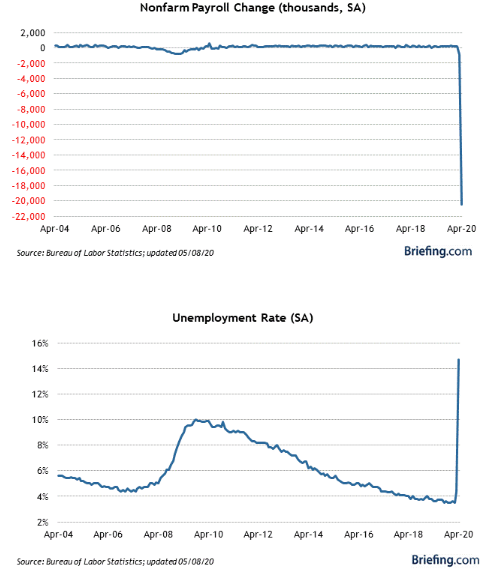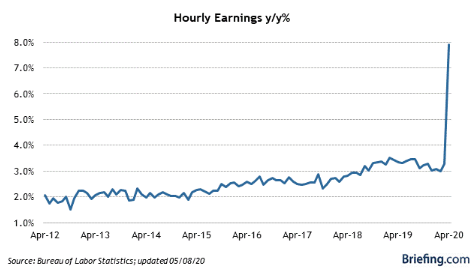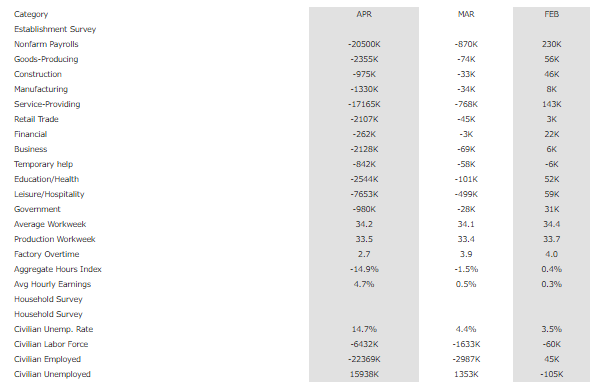The US Jobs Picture Is Dismal - There Is No Sugar Coating The Outlook
“Anyone still thinking that the pandemic’s economic effects are limited to people in restaurants, travel and similar service businesses is very much mistaken. Workers in almost every industry, including those that on the surface shouldn’t be affected by the pandemic at all, are at risk.” (NYT, May 8,2020)
The Covid-19 virus and the shutdown of the US economy have demolished the US job market.
The employer survey and the separate household survey underscore the deepening damage to the labor market, even though both surveys understate the true extent of the hemorrhage. Both surveys also reveal some odd statistical anomalies.
According to the latest surveys, the pandemic and the shutdown of the economy resulted in the American economy shedding 20.5 million jobs in April, and the unemployment rate rising to 14.7%. This represented the largest monthly increase in unemployment in the history of the data collection.
However, the April job loss far exceeds the 8.7 million jobs lost in the Great Recession, when the unemployment rate peaked at 10% in October 2009.
The only other comparably high unemployment rate was in the 1930s Depression when the unemployment rate rose to 25% in 1933.
Nonetheless, the 14.7% unemployment rate in April is a vast understatement.
The U6 unemployment rate, which accounts for unemployed and underemployed workers, is a bit more indicative of true unemployment in the US. The U6 unemployment rate was 22.8% in April versus 8.7% in March.
Nonetheless, both measures are too low because in April there was a large increase in the number of workers who were classified as employed but were not working, but were expecting to be recalled when conditions normalized.
If these furloughed workers were recorded as unemployed, it would have added almost 5 percentage points to the 14.7% unemployment rate in April.
Clearly, because the pandemic economic downturn has been so different, standard economic measures are struggling to reflect the real impacts.
See for example the huge increase in the average hourly earnings of employed workers in April because many low wage workers lost their jobs.
(Click on image to enlarge)

(Click on image to enlarge)

(Click on image to enlarge)




